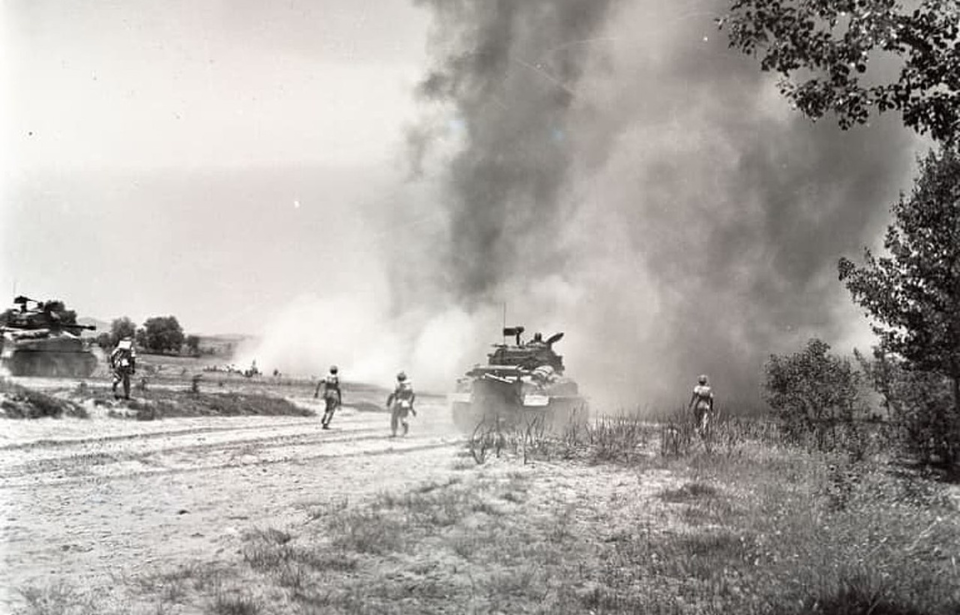Over the course of six-and-a-half weeks in 1965, India and Pakistan fought a war – and they didn’t do it alone. The world was watching, and many super powers were taking part behind the scenes. For example, the United States, the United Kingdom and the Soviet Union each supplied weapons and vehicles to their favored side(s).
The main feature of the Indo-Pakistani War was the heavy use of tanks. The most notable offensive to feature them was the Battle of Asal Uttar, which saw the Indian Army put outdated vehicles, including the British Centurion, up against the US Patton tanks manned by Pakistan.
The Pakistanis had US Patton tanks
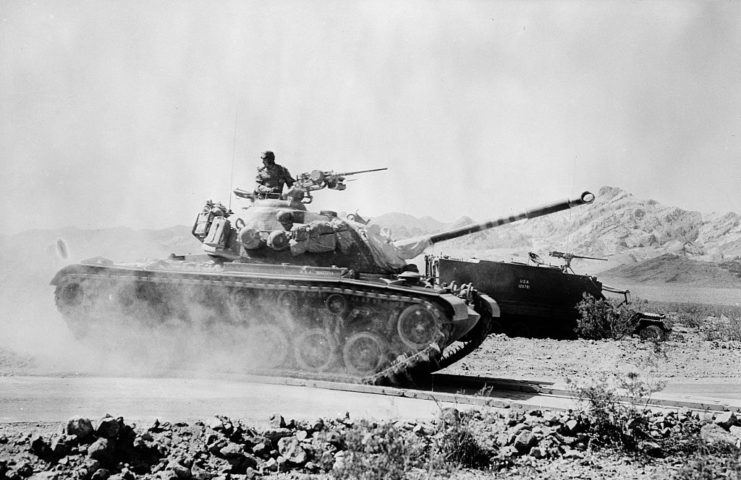
The US had sold arms and supplies to both India and Pakistan over the years. The Pakistani Army believed it would have an advantage in its operations against India, thanks to its roster of Patton tanks, which were said to be unbeatable on the battlefield.
The M47 and M48 were developed shortly after the end of World War II. Tanks had played a prominent role in the conflict, and the US aimed to have the best on the market with these armored vehicles, which were named after famed Gen. George S. Patton.
The M47 had been developed to replace the M26 Pershing and M46 Patton medium tanks, and saw widespread use by American allies during the Cold War. The M48, also known as the 90 mm Gun Tank: 48, is best known for its service during the Vietnam War and was designed to replace the aforementioned tanks, as well as the M4 Sherman.
The Rann of Kutch
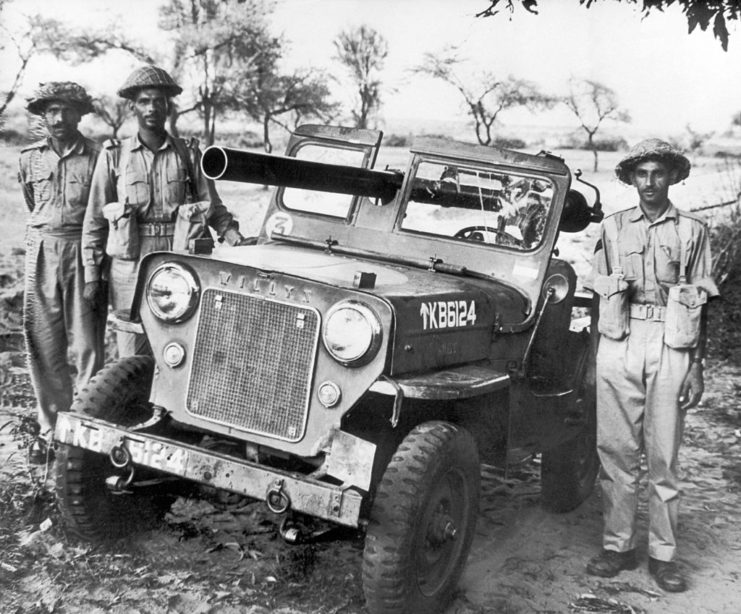
Prior to the start of the Indo-Pakistani War, Pakistan attacked an Indian-held area known as the Rann of Kutch. A barren piece of land in the Indian state of Gujarat, it began to see regular patrols by the Pakistani Army, which forced the Indian Army to increase its watch over the area.
As both sides continued to increase their military presence in the Rann of Kutch, minor skirmishes turned into small battles. In a better position, militarily, than the Indian forces, the Pakistani Army was able to break through some of the Indian defenses and gain ground.
Emboldened, the victorious army continued to push into Indian territory. The Pakistanis launched an attack on April 7, 1965 and, eventually, managed to take Vigokot and Biar Bet. These incursions drew even more attention from the Indian government and military, both of which were prepared to engage in a large-scale war, if necessary.
The Pakistanis badly miscalculated
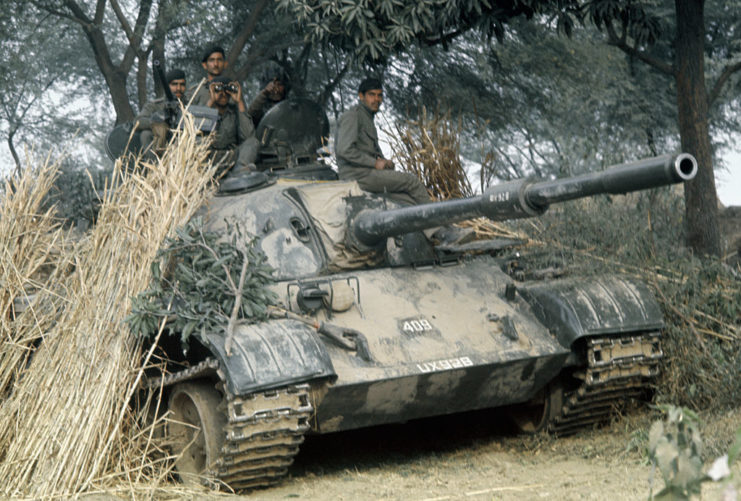
After their success at the Rann of Kutch, Vigokot and Biar Bet, the Pakistani Army had its sights set on a much bigger prize: Kashmir. The Pakistanis believed those living in the valley would join their cause and fight alongside them, prompting them to launch Operation Gibraltar. However, they were wrong, as the people of Kashmir were loyal to the Indian cause and shared information with the opposing military.
Still, the Pakistanis had a large number of moderately-upgraded M47 and M48 tanks, with their six regiments manning around 264 armored vehicles. Indian forces in Asal Uttar, on the other hand, had three regiments manning just 135 tanks, which included outdated M4 Shermans, British Centurions and French AMX-13s.
After two weeks of fighting, the Indians were able to catch the Pakistani tanks in a horseshoe trap. Forcing their opponent into the muddy ground of a sugar cane field, the Indian soldiers fired their tank guns, destroying over 100 Pakistani-manned tanks and damaging another 40. In comparison, the Indian forces only lost 10.
Victory in the Battle of Asal Uttar went to India.
The legend of Abdul Hamid

The Battle of Asal Uttar is one of the most famous in Indian history. As a result, many of those who took part are recognized as national heroes. However, none is more famous than Abdul Hamid.
Hamid joined the Indian Army at the age of 21 and participated in many conflicts. During the Battle of Asal Uttar, he was tasked with manning the recoilless rifle mounted atop a Jeep. He had the unenviable task of going up against the Pakistani’s large force of Patton tanks.
During the battle, Hamid took out eight tanks, earning him the nickname of “Patton Killer.” Seeing others on the approach, he left formation to deter them. Hamid shot his gun at the same time a tank shot its own. Despite being killed during the engagement, his legacy continues to live on. His actions also hurt the M48’s reputation, leading Pakistan to replace the tank with the M60 following the war.
Legacy and aftermath
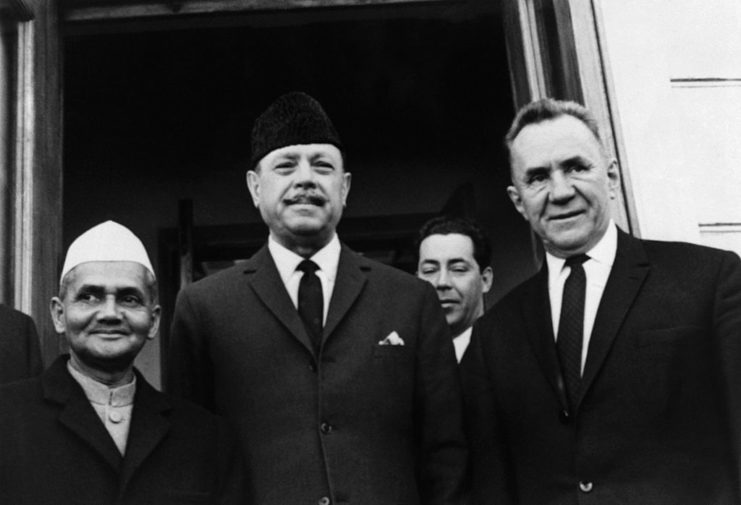
The Indo-Pakistani War concluded close to two weeks after the Battle of Asal Uttar. The two countries had essentially fought to a stalemate; no territory was changed as a result of the conflict. Despite this, both claimed victory. India lauded its forces for beating back the technologically-advanced tanks manned by the Pakistanis, while Pakistan was proud it had gone head to head against an army two-and-a-half its size and held its own.
More from us: Paul Tibbets Dropped the Atomic Bomb on Hiroshima and Was Given No Funeral or Gravestone
Most significant for the US was the way the war affected its relationship with both nations. During the conflict, both India and Pakistan felt the US and the UK didn’t support them in the way they’d expected. This drove both to develop more significant relationships with China and the USSR.
